
Transparent tailoring.
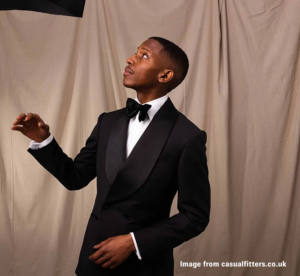
My 35 year old dinner suit is being retired. It’s seen a lot, and served me very well. It was the first suit I bought where the price exceeded my monthly income, make that the only suit, but on a cost per wear basis it was a bargain.
I did buy another, lightweight alternative, just five years ago, but despite being tailormade, it didn’t stand up to evenings in the company of various characters – I’m sure you can appreciate what I’m saying!
So it’s time for another one – just the third in my adult life, and hence I decided to research the various options – and discovered this really helpful guide on casualfitters.co.uk which many businesses would do well to emulate.
Bespoke Suit Cost vs. Made to Measure Suit Costs
Firstly we need to define Made to Measure vs Bespoke suiting. We at casual fitters offer Made to Measure suiting which differs from Bespoke in several key ways.
Pattern
Firstly we use a made to measure pattern system. A made to measure pattern system allows us to tailor you the perfect suit, trousers, blazer, shirt or overcoat from a pre-existing set of measurement options. We use a custom developed industry leading MTM pattern that allows us to perfectly fit every client, we also have an almost unlimited array of style options to choose from. This differs from “true bespoke” where a pattern is hand drafted from scratch to incorporate a client’s measurements and style.
Fittings
At casual fitters we offer 3-4 fittings total; commission appointment, first fitting, final fitting and sometimes a second final fitting. This allows us to properly account for a client’s measurements and preferences while keeping the process as efficient as possible. A bespoke fitting process usually involves a 5-6 fitting process in which the client is measured then remeasured again with the garment being put on the client in various stages of construction.
Construction
We at casual fitters construct our suits using a made to measure “full canvas” construction which is very similar to a bespoke construction although we ‘machine pad’ the lapels vs true bespoke which hand pads the lapels. We also produce our suits in a factory setting whereas true bespoke is normally made in a bespoke house’s workrooms. Some other made to measure tailors also tend to use lesser forms of construction such as fused (floating chest piece) or half-canvas constructions which are a lot cheaper to make but far more inferior in terms of quality.
After understanding the above key difference we can now look into how much a made to measure suit vs. bespoke suit should cost.
Bespoke
A bespoke suit typically costs a minimum of £4000 if a tailor follows the processes ascribed by the savile row bespoke association as well as making in the UK. Savile Row Bespoke Association.
- Typically it takes 80-100 hours of labour spread across the cutter, trouser maker, coat maker and finishers. This labour runs at £10-18 per hour equalling roughly £1400 for construction costs.
- Materials from there typically cost £400-700 with a basic cloth choice from a top tier British or Italian mill.
- With VAT then taking another £666.66 (4000/1.2)
- This means a bespoke tailor typically receives less than a 1x margin for a properly made bespoke suit.
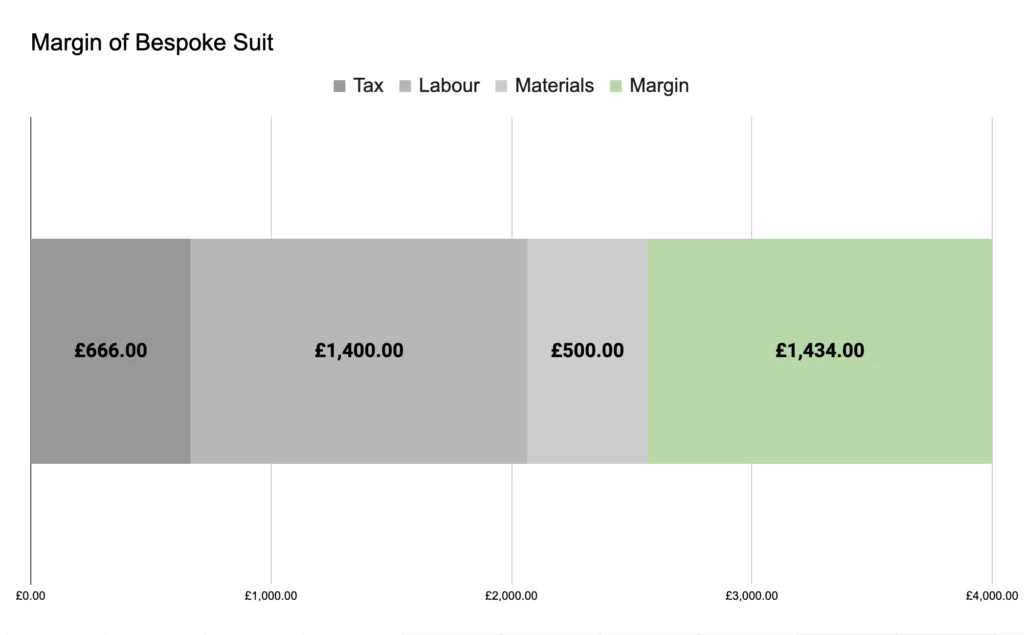
Made to Measure
A made to measure suit can cost anywhere between £400 to £3500 in London depending on choice of cloth, construction quality, tailors markup, tailors overhead and their factory prices.
At casual fitters we charge £995 for a full canvas suit made with our production partners in Romania. We believe we have struck a good balance between getting the best possible Made to Measure fit, fabric and construction quality in front of our customers while not over charging at the same time.
Typically a full canvas suit that is made in a reputable European factory costs between £280 and £330 without fabric. Fabric is next costing £150 with a standard cloth from a top tier British or Italian weaver. We save a lot of this cost by buying exactly the same cloths as other tailors but we buy them as remnants, meaning we pay 50%+ less.
From there it’s all in the tailor’s markup and overhead. We keep our overhead (small/efficient stores without an expensive bottle of whiskey in sight) as low as possible, we also keep our markup as low as possible so we can deliver the best quality product possible to our customers.
Below are three charts comparing casual fitters markups, margins and costs with its more expensive and cheaper competitors.
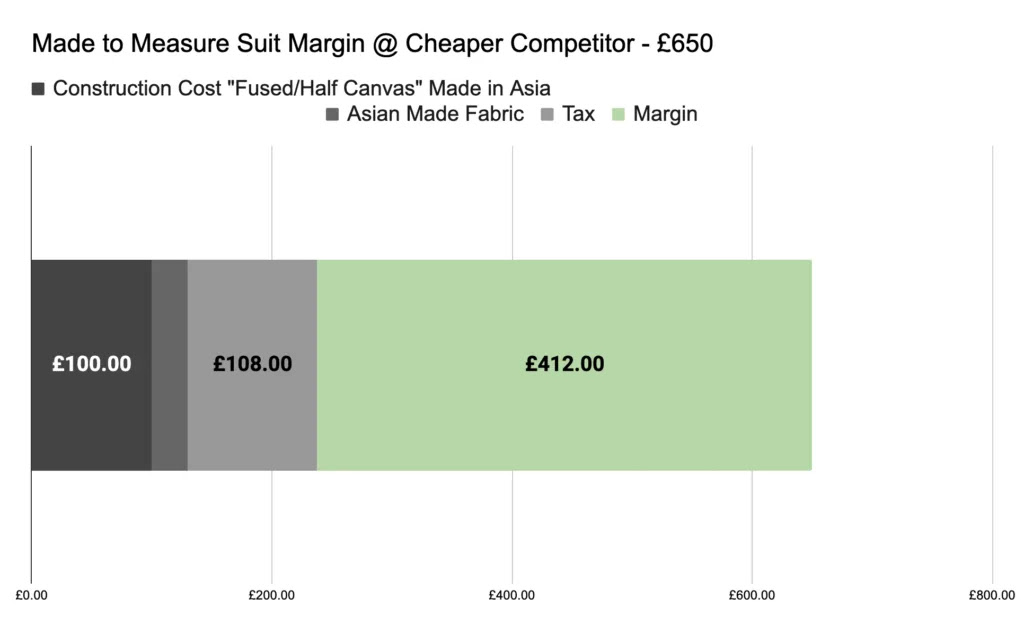
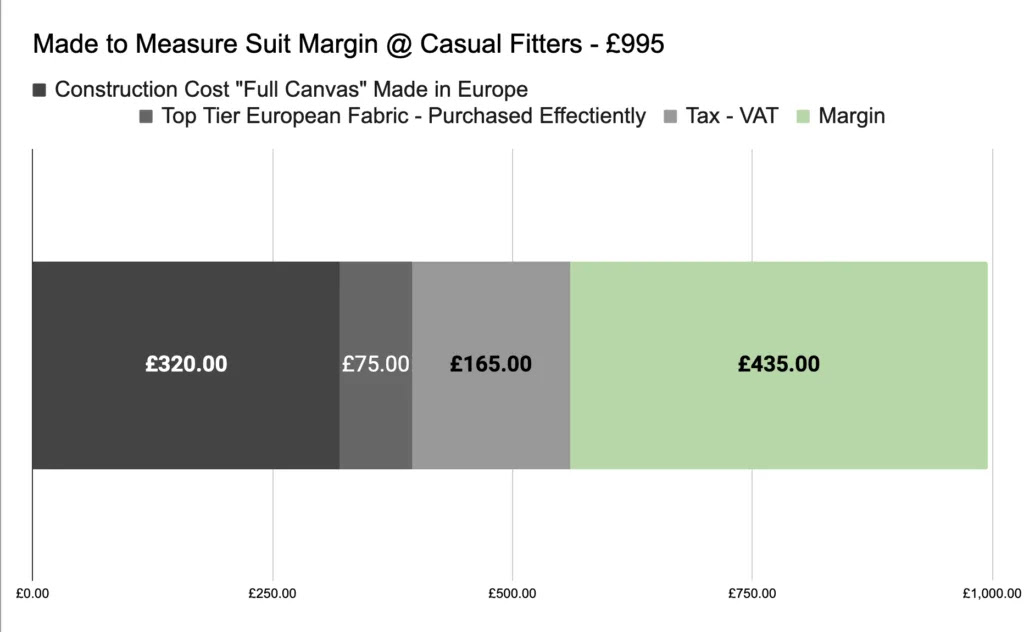
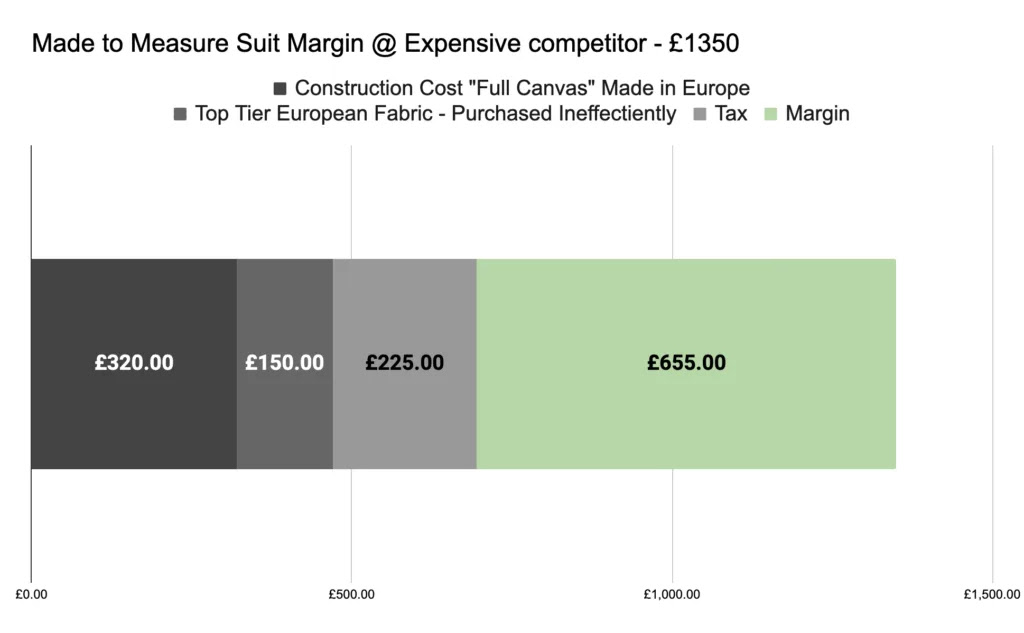
This transparency gave me the confidence to make an appointment for a fitting – I’ll let you know in six weeks or so if I’ve been well suited, or stitched up!
Join over 6,000 property professionals, including leading estate and letting agents and receive information, insight, ideas and inspiration (four-i) from top estate agency coach Peter Knight, straight to your inbox every Monday. Join now
Find out more about Property Academy and the services we provide here.
Agree or disagree with the views expressed in this newsletter? Share the article and your views on social media today.
Follow our social channels here: